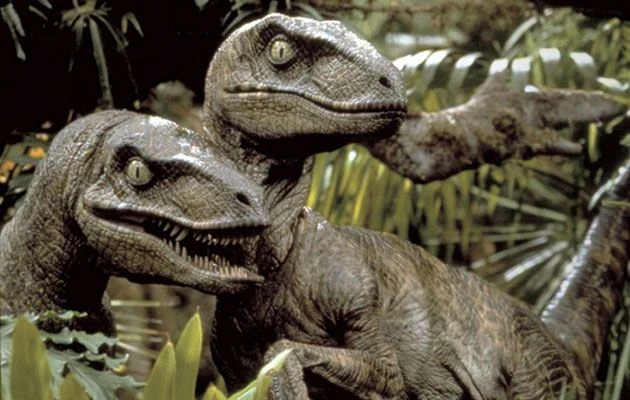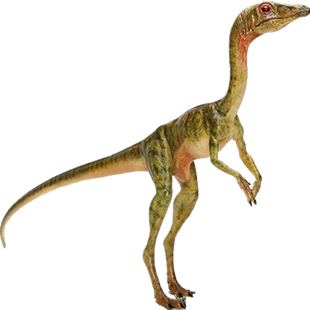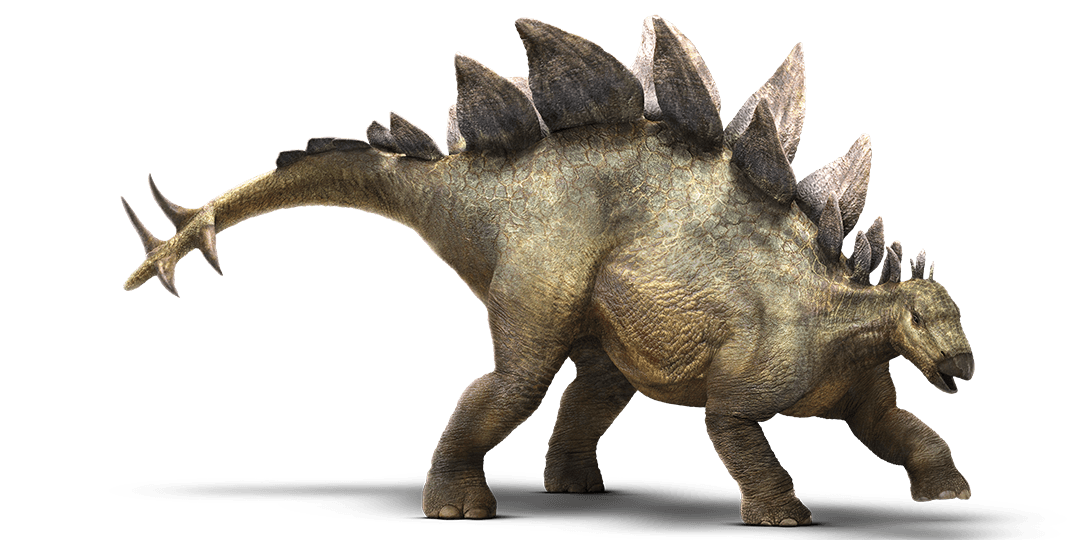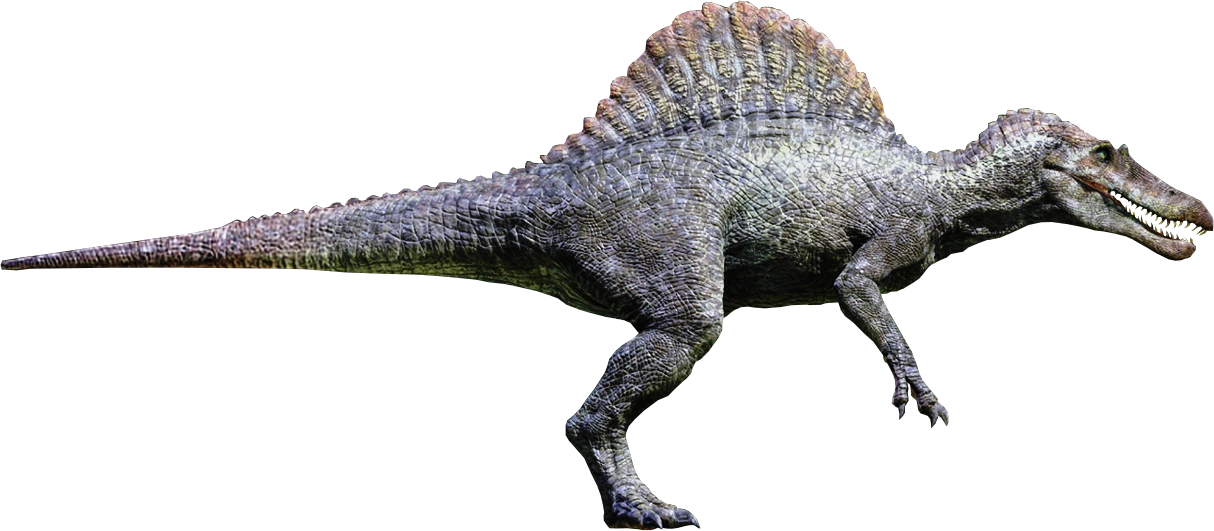Let’s make something clear. Jurassic Park is a monster movie, as are all its sequels. A monster movie, by my definition, is a movie where fantastical creatures are the main draw. A Godzilla movie is the greatest example of this. Nobody goes for the plot, they go for the absurd beasts thrashing each other. On the other hand, although the Lord of the Rings movies had a menagerie of monsters, they were not monster movies because showing off creatures was not the main priority.
As such, Jurassic Park was a major success. I have my problems with the accuracy of its dinosaur depictions, but as a monster movie, it hits the exact right notes. It provides a wide array of creatures, all with distinct personalities, roles, and designs, and as such, is an amazing springboard for talking about the series’ successes and failures and how they reflect on monster design in general.
Let’s start with the cast of dinosaurs in Jurassic Park one. We won’t be discussing any individual herbivore in detail, as they are not presented as a threat in this movie. For the purposes of this article, this means they aren’t monsters, filling no threat role. However, here’s a note for real life; herbivores are monsters too. Cows kill a lot more people than you’d think, and even something like the graceful forest pony known as the deer can put an antler through your ribs if it feels like it. That doesn’t mean they’re bad or cruel, just that they’re dangerous and should be treated with respect.
The initial movie gives us three predatory dinosaurs, each of which presents its own distinct form of threat: the Dilophosaurus, the raptors, and, of course, the T. rex. With just three monsters, Jurassic Park manages to provide three entirely different threats, one of them in just a single scene!
Dilophosaurus

Of the dinosaurs in the original movie, this is likely the one that ended up the least like its real-life counterpart. The real Dilophosaurus was up to 20 feet long, definitely didn’t have a frill, and almost definitely didn’t spit venom. I suppose now is a good time to talk about inaccuracies in Jurassic Park. I have mixed feelings I guess? On the one talon, I read this as a series of monster movies. They’re not dinosaurs, not really; they’re monsters that look kinda like dinosaurs. On the other tentacle, Jurassic Park is most of the mainstream public’s only exposure to something as niche as paleontology, so it would be nice if the newer movies made some attempt to update and the old ones didn’t just flat out make things up.
However, if they didn’t get weird and speculative and crazy, we wouldn’t have the most iconic, and to my mind memorable monster of the entire film. The movie Dilophosaurus looks badass. Its frill is seriously awesome, and flashed at the exact right moment. And it perfectly accentuates its role in the film; the Dilophosaurus is the Underestimated.
This archetype is usually played for comedy, such as the Killer Rabbit in Monty Python and the Holy Grail, but it can be very effective horror if done right. After all, if the characters don’t expect what’s coming, the audience can be just as surprised when things go south (done wrong, the characters will just look like idiots, especially if by sharing a world with a monster, they should probably have a decent grasp of how dangerous it is). In the Dilophosaurus’ case, it is played for a rather shocking and brutal death, the small, curious, seemingly harmless Dilophosaurus suddenly displaying a lethal ability and killing Dennis Nedry in his getaway vehicle. A brief scene, but the one that stood out the most in my mind as a child and to this day.
Raptors

Now, while Dilophosaurus was my favorite, the other two were what captured the public imagination and have had major roles in every Jurassic Park movie since (not counting 3 for the Tyrannosaurus rex). The raptors don’t really resemble any actual dromeosaur, let alone Velociraptor, and that’s not even covering integument (skin covering, in this case, scales rather than feathers). They’re shaped mostly like Deinonychus (not Utahraptor, which had a much bulkier body) but quite a bit bigger than even the largest Deinonychus found.
While this size upgrade made the raptors a decent physical threat all on their own, they are more known for being the smartest monsters on the island, and more so with each installment. In the initial book and movie, they are most comparable to modern intelligent pack hunters like wolves or even hyenas. They’re capable of simple communication, team coordination, and surprisingly advanced learning. Smart, but not unrealistically so for your pack hunter. They still fail to recognize a reflection and run right into it.
This combination of manageable size and worrying intellect makes them the main “villains” of the first movie, the ones that get the most focus as a serious threat to the humans on the island. They are, essentially, the closest things to our equals in the movies. They can face us in our own spaces and outwit us when we don’t recognize their tactics. As the archetypal Pack monster, their threat comes in intelligent use of their numbers, paired with each individual member being deadly in the right circumstances.
By the third movie, they have a much broader ability to communicate, which seems to now not just convey simple concepts but even more complex ideas like intent, which isn’t just primate level, it’s damn near human. They can seek revenge on humans for stealing their eggs, then express forgiveness when the eggs are returned. In Jurassic World: Lost Kingdom, it becomes even more absurd when a raptor is basically a really smart dog, capable of understanding when humans are helping it, even as it undergoes painful surgery.
That’s, uh… that’s pushing it, guys. The Tyrannosaurus undergoes an even stranger transformation in the World movies, as we’ll see in the next section.
Tyrannosaurus

The biggest of the big three and a dinosaur whose fame was widespread even before the movie came out, the Tyrannosaurus rex is the Juggernaut of the film. No particular special abilities, not necessarily the smartest, but with so much raw strength and durability that it poses the greatest threat in the film anyway. The raptors are the most frequent threat, but the Tyrannosaurus is unstoppable when it does show up. It even famously demolishes the raptors at the end of the film.
This is a surprisingly precarious role. Because its defining role is to be the biggest and strongest, the Juggernaut is rather prone to the Worf Effect. What better way to introduce the new villain than by having them beat up the biggest, strongest thing in the world? We’ll talk more about that in the Spinosaurus section. It’s also prone to decay through further appearances. The Pack will come up with new tactics, or greater numbers, or another way to be dangerous. The Juggernaut is kind of a one-trick pony. Therefore, this niche is best used sparingly. Hell, the difficulty of topping the initial use of the T. rex might be the reason the films have had such difficulty following up the original.
This rounds out the monster cast of the first movie, and it was a good balance. We had the smart monsters, the strong monster, and an unexpected monster with a deadly trick. It’s a really solid baseline to work from, but obviously, if you’re going to make more movies, you need to expand your roster. People want to see their old favorites, sure, but they also want to see new threats! So the next two movies added a few more, filling roles that were not touched originally.
Compsognathus

Even before Jurassic Park came out, Compsognathus’ claim to fame was its small size, making its role in the film a shoe-in. Of course, in real life, Compsognathus was only slightly smaller than Velociraptor, but accuracy has never gotten in the way of a good story in Jurassic Park. Or a bad one! Retaining their small size puts them in a sort of offshoot of the Pack; the Swarm.
What distinguishes a Swarm from a Pack monster? Well, a Pack monster is dangerous on its own, and hunts with tactics. A Swarm monster is mostly harmless on its own, usually small and pathetic in a one on one fight, or otherwise incompetent to pose a threat on its own. The classic Swarm monster these days is the zombie, which while human sized, is too stupid and slow to kill any armed human. The Swarm monster is only dangerous in large numbers, using raw numbers to overwhelm their prey.
Compys fit this to a t. An individual is vastly smaller than a human and doesn’t have the venom of a Dilophosaurus, but in large groups, they can swarm people and tear them apart. What’s worse is in the books, it’s noted that they can carry rabies. Death by compy isn’t quick even if you don’t escape. They just don’t have the damage capacity to kill quickly. Raptors are scary cause they’re efficient and deadly. Compys are scary cause they’re not.
Stegosaurus

An herbivore, yes! And a good choice too! The Stegosaurus is the Panicker, the monster that isn’t aggressive, but must be dealt with walking on eggshells, for the slightest sign of threat sets them off. This is a common role for herbivores, as they are generally seen as less aggressive than carnivores. Accuracy aside, a stampede really is terrifying, and the Stegosaurus adds another weapon, its oversized spiked tail. Not only will it step on you, it can impale you.
God, Stegosaurus is so weird. What a wacky dinosaur. I honestly wish it got more attention, but it had a decent enough scene.
Pteranodon

Jurassic Park 2 had its issues, but 3 was where we really start to have some bad decisions. Not everything is bad, but there’s a lot that could be done better. I have mixed thoughts on the use of the Pteranodon, but let’s go over the basics first. The Pteranodon fits the role of the Sky-Snatcher, whose main role is to swoop from the sky, pick up a character, and drag them off to its nest, where its babies will inevitably be waiting to eat them. It’s a classic, since it has narrative functions atop its basic role as a threat. You want the team split up? Throw a Snatcher to grab the smallest member!
My problems with the Pteranodon are half legitimate, half complete nonsense. The legitimate first, the Pteranodon fits its role too solidly. There’s absolutely no innovation to it. All it does is swoop in, grab a kid, and drag him off for its babies. I’ve seen it a lot, and there’s not much innovation there. The baby pterosaurs are cute, but I would like to see a little more done with it. Personally, I’d emphasize how surprisingly dangerous pterosaurs can be on the ground.
The second thing is totally unfair, because I really love the Dilophosaurus for just how out there and wrong it is, but I can’t stand how inaccurate the Pteronodon is. It’s named after being toothless, and yet they give it teeth. Pterosaur feet were made for walking, not grabbing prey off of the ground. And where’s its fuzz!? Pterosaurs were fuzzy, dammit! It’s not like fuzz and feathers are inherently less scary than scales. Pattern it like a cartoon vulture. Come on, this isn’t hard.
Spinosaurus

And here’s the last major dinosaur of the original trilogy! Boy was it a good choice. I love Spinosaurus, and I was very excited to see it in a movie as a kid. And then I did and… hmmm. Oh boy. Unfortunately, this is what I was talking about with how a Juggernaut tends to be the main target of the Worf effect. The first major thing the Spinosaurus does in the film is kill a Tyrannosaurus rex. This… was a poor idea.
In one move, you’ve angered fans of the Tyrannosaurus rex and established a baseline for the Spinosaurus. It is the new Juggernaut, the better Tyrannosaurus rex. It has to be amazing to live up to those expectations. Remember, there’s been nearly ten years since the first film at the point this happens. The Tyrannosaurus doesn’t just have its genuinely good performance to ride on, it’s backed up by nostalgia. The Spinosaurus has be better than the nostalgia-fueled awesomeness of the Tyrannosaurus. And, well, it’s not.
Let’s start with behavior. See, while the predators of Jurassic Park have always been overly aggressive, the Spinosaurus takes this to an absurd level, chasing a small group of humans all over the island for no particular reason. They’re so small to it that surely it’s using more energy tracking them down than it would recoup eating them, and it robbed a Tyrannosaurus of a large meal right at the beginning. Earlier dinosaurs could still be believed somewhat as actual animals, but now they’re straight up only movie monsters, more so than ever before.
Second, its role. Spinosaurus is basically a replacement Juggernaut. It’s established as stronger than the Tyrannosaurus rex, but this doesn’t matter. They couldn’t have taken down the Tyrannosaurus rex with their complete lack of weaponry, so a stronger opponent than that is quite meaningless. It’s not like they’re more screwed. The only thing that really distinguishes it from the Tyrannosaurus is its ability to swim, which genuinely does lead to the best scene in the movie, the fight with the Spinosaurus on the river. The problem there is that it just simply… wanders out of the movie after the fight, never to be seen again. It feels rather anticlimactic for such a persistent predator to just leave.
So, that’s the original trilogy of films covered. Join us next time for a look at Jurassic World’s monsters, how it uses them, why it’s terrible, and how they could have used them better. Uh, yeah, I don’t like Jurassic World much.
Jurassic World 2’s review is also up now! Check it out here!

Oh, an interesting breakdown of horror archetypes as seen through the lens of big scary dinoboys.
Honestly, I think the Dilophosaurus scene is arguably the most iconic scene in the first movie. Followed by the T-rex vs Velociraptors bit.
I only give the Tyrannosaurus vs. raptors scene a spot above the Dilophosaurus since the movies keep trying to recapture it by making the Tyrannosaurus the hero dino. The dilophosaurus really was impressive though for what an impact it made on the public conception of the creature. I can’t tell you how many frilled Dilophosaurus toys there are.